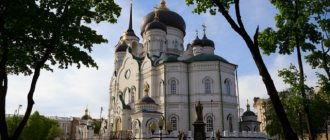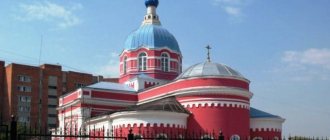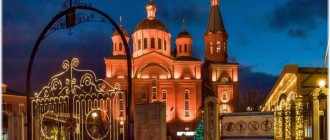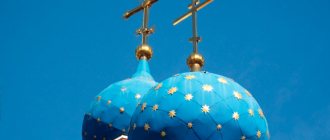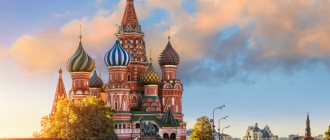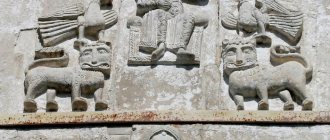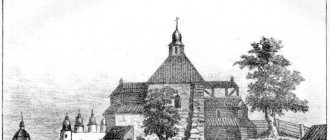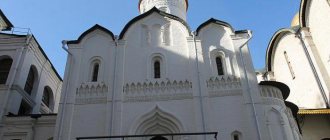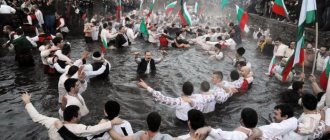Currently, world Orthodoxy includes fifteen autocephalous (independent) churches. Among them, according to the diptych adopted in the Russian Orthodox Church - the order of commemoration during the liturgy of their primates, the third place is occupied by the Antioch Church, which is one of the oldest in the world. Its history and problems of modern life will be the subject of our conversation.
Heritage of the Holy Apostles
According to legend, it was founded in 37 by the holy apostles Peter and Paul, who visited the city of Antioch, located on the territory of Ancient Syria. Today it is called Antakya and is part of modern Turkey. It should be noted that it was in this city that the followers of Jesus Christ were first called Christians. This is evidenced by the lines of the 11th chapter of the New Testament book of the Acts of the Apostles.
Like all Christians of the first centuries, members of the Antiochian Church immediately after its founding were subjected to severe persecution by the pagans. This was put to an end only by the co-rulers of the Roman Empire - the emperors Constantine the Great and Licinius, who in 313, with a special edict, legitimized freedom of religion in all territories under their control, which included Antioch.
Antioch Church
At the end of the 6th century, the Church of Antioch included 151 dioceses of varying dignity. Nowadays, the total number of diocese in the entire patriarchate rises only to fifteen, together with the diocese of the patriarch. Here is a directory of the dioceses of the Patriarchate of Antioch, with some statistical information about each of them.
1
. The diocese of Damascus constitutes a patriarchal region, now under the administration of His Beatitude Gregory IV, Patriarch of Antioch and all the East. The diocese consists of the city of Damascus and a few surrounding villages, and the city of Antaki (Antioch), located within the Laodicean diocese. Damascus is the capital of Syria, has up to 300,000 inhabitants, but the Orthodox population extends to 17,000 people, Latins number 18,000, Protestants 500, Muslims 250,000, etc. The city is divided into three large quarters - Muslim, Jewish and Christian. The Orthodox Patriarchate is located in the center of the Christian quarter. The Cathedral Patriarchal Church is dedicated in honor of the Dormition of the Mother of God. Another Orthodox church is located in the southern suburb of Medan. Previously, there were two titular bishops in Damascus - Irinople and Edessa, but now these bishoprics have been abolished, and the closest administrative assistants to the patriarch are the protosyncellus and the great archdeacon.
All other dioceses of the Patriarchate of Antioch have been elevated to the dignity of metropolises, namely:
2
. The Tyro-Sidonian metropolis is located in the southern part of the patriarchate, and bordering on the patriarchal region, it has the cities of Tire (Sur) and Sidon (Saida) and large villages (κωμοπόλεις) Rasheya, Hasbeya and ed-Jedede-Merj-Ayun. The Metropolitan officially holds the title - “most honorable and exarch of maritime or first Phenicia.” Nowadays the Metropolitan of Tire and Sidon is V. Name (Dib), who does not have a specific residence, but lives in one or another of the specified cities and villages. In Tire, Sidon, Hasbei and Rashi there are also small premises belonging to the metropolitanate. There are no monasteries in the diocese, the churches are poor and unsettled. The Metropolitan receives from the diocese only voluntary offerings for his maintenance, and occasional income for performing divine services and services. In addition, annually the Metropolitan receives 500 rubles from the Russian Holy Synod for the maintenance of some schools in the diocese, and 120 French gold coins (900 rubles) are given from the Patriarchate from a subsidy of 30,000 rubles received annually from the bounty of the Sovereign Emperor; of the last amount, 40 gold pieces go to the maintenance of the metropolitan, and the rest of the money is spent on the needs of the diocese. In general, the metropolitan's income is extremely limited, due to poverty and the small population. Due to the difficult financial situation and other local reasons, Metropolitan Elijah at the Council of the Church of Antioch in the summer of 1910 renounced the Tyro-Sidonian diocese, but his resignation was not accepted. At the end of 1912, Metropolitan Elijah undertook a trip to America to seek funds among the local Arab kinots for the improvement of his poor diocese. How poor the Tyro-Sidonian diocese is is evidenced by the following information about its condition, officially reported by His Beatitude Patriarch Gregory IV to the Russian consul in Damascus, Prince B. N. Shakhovsky. So, in the village of Majdal-Shams there are 675 Orthodox residents, there is a church in the name of St. George (with a priest) and a school maintained at the expense of the residents. There are churches and schools in the villages: Jabbata-z-Zeyt (in the name of the Prophet Elijah, without a priest, inhabitants of 200 souls), Der-Mimas (in the name of St. Archangel Michael, inhabitants of 900, there is a priest, a small abandoned monastery of St. Mama has been preserved ), Al-Khirbat (the church in the name of St. George is being built by a priest, 300 inhabitants), Al-Khiyam (the temple of St. George, there is a priest, 200 inhabitants, no school), Zhdayde-Marj-Iyun (4,000 inhabitants, a church in honor of Our Lady with three priests, the school belongs to the Imperial Orthodox Palestine Society), Bueida (a temple in the name of the prophet Elijah, there is a priest for 140 inhabitants, there is no school), Blag (a stone church, with a new iconostasis, in honor of the prophet Elijah, there is a priest and a school, inhabitants 160), Ibl-es-Saki (with a population of 700 souls, there is a temple in the name of St. George and a school with a teacher and a teacher, maintained at the expense of the community). Rashaya al-Fakhkhar (has 700 inhabitants, St. George's church with two priests and a school), Al-Fredis (80 inhabitants, St. Mama's church, no priest or school), Abu Kamha (100 inhabitants, church in the name of St. George, without a priest, the school is maintained by the British), Ain-Kinyat-Hasbaya (church in the name of the Archangel Michael, the school with a teacher is maintained with a subsidy from the British, residents 251), Mi-mis (stone church in the name of St. George, with a good iconostasis, an extensive school is maintained at the expense of residents, the number of which is 400), Ain-Ata (there is a temple with an earthen floor, the priest was again elected from local residents, there is a teacher at the school, the population is 200 souls), Shuba (a temple in the name of St. George, under whom an elder priest served for 53 years, who died at the age of 104 in 1911; another was elected in his place; next to the temple there is a school; inhabitants - 300), Ain-Khurshe (temple in the name of the Archangel Michael, with two priests, a school with a teacher, inhabitants - 400), Aykha (with a population of 80 souls, there is a church of the Archangel Michael with a priest and a school with a teacher), Kafr Kuk (inhabitants - 130 souls, the temple of St. George with a priest, there is a school), Dagr el-Ahmar (the Church of St. George with a priest, inhabitants 40 souls, no school), Mkhedfe el-Bika (Church of St. George, priest-archimandrite, inhabitants 100 souls, there is a school ), Kafr Mashki (with a population of 800 souls, a church in the name of the prophet Elijah, with two priests, one of whom is an archimandrite, a teacher and a teacher at the school, who receive assistance from the Russian consulate in Damascus, in view of the intense propaganda of the Latins and Protestants , having their own churches and schools here), Ain Arab (with 300 inhabitants, a temple in the name of St. Thomas the Apostle, a school with two teachers). In addition, in the village of Hasbee there are three large stone churches - in the name of St. George, Our Lady and St. Nicholas, with good iconostases, but there is only one priest for now. Schools for men and women were established by the Orthodox Palestine Society. The population consists of 700 souls. In the large village of Rashaya (Rashaya al-Wadi), the number of Orthodox residents reaches up to 400 souls, there are two stone churches in honor of the Mother of God and St. Nicholas, where five priests serve. The Palestinian Society runs two schools here. But for this reason, in some villages there are no temples or schools, namely in Trunj (inhabitants 50 souls), Jabbat al-Khashab (-12), Ain Fit (-40), Ain Kinyat Banyas (-20) , Dibbin (-55), Shuaya (-50), etc.
In general, the Orthodox population of the Tyro-Sndon diocese extends to 16,000 souls. But many of the local residents, in the interests of material well-being, emigrated to America. Morally, the state of the local population is low. Due to communication with other faiths, Orthodox residents often violate church rules regarding marriage. But there is a great desire among the people for education. More than one hundred students from the population of the Tyro-Sdonian diocese are studying in educational institutions in Beirut, Sidon and Damascus. And the rural population of the diocese strives for education and establishes primary schools at their own expense. By the way, it is desirable for Metropolitan Elijah and the people to establish a school in Kfeir to train rural teachers. While traveling around the diocese in 1911, His Beatitude Gregory provided many communities with financial assistance for the construction and repair of churches and schools, and also encouraged wealthier residents to donate to the communities. It must be assumed that after Metropolitan Elijah’s trip to America, many urgent religious and moral needs of the Tyro-Sidonian diocese will be eliminated.
3
. Metropolis of Beirut, the see which occupies the high position. Gerasim (Massara), “the most honorable and exarch of coastal Phenicia.” Metropolitan Gerasim is known for his outstanding education; By the way, he owns a two-volume work in Arabic about the division of the Eastern and Western churches and about attempts to unite them. The metropolis consists of the city of Beirut and a few surrounding villages in Lebanon and borders the Tyro-Sidonian, Damascus and Seleucia dioceses. Despite its small limits, the Metropolis of Beirut is one of the rich dioceses of the Antiochian Church, since the city now serves as a major commercial, industrial and cultural point. Beirut currently has up to 120,000 inhabitants, of which about 36,000 are Muslims, up to 40,000 Catholics, about 2,000 Protestants, up to 35,000 Orthodox, and the rest are Jews and Europeans of various nationalities.
The cathedral church was built in the name of St. St. George the Victorious.
4
. The Seleucia diocese is now under the administration of Metropolitan Herman, “the most honorable and exarch of the first Syria.” The residence of the Metropolitan was formerly located in Malula, and now his place of residence is the city of Zahle, in Lebanon, north of Damascus and east of Beirut; The diocese is also in contact with the metropolises of Tyro-Sidon (in the south) and Tripoli (in the north). The general condition of the Seleucia diocese can be judged on the basis of the following statistical data. The total number of cities and villages that make up the diocese extends to 40. There are the same number of priests in the diocese. But the churches in many villages are poor and unsightly. Only in Zahle, where Metropolitan Herman resides, two new churches were built, and in Sednaya, out of three churches, one is landscaped and equipped with sufficient utensils, and in other areas the churches are either dilapidated (for example, in Muallaq, Kaulrugim, Karaun, Zhubb-Zhannin, Kubilias , Niha, Shlif, Zhabiat, Al-Zabedani, Yabrud and Karate), or do not have an iconostasis and church utensils (for example, in Majdal-balkhis, Baalbek, Talya, Kafar Zabad, Mauruni); in some villages there are no temples at all, for example, in Khirbat-Kanafir, Sadnail, Turbol, Dulugmiat and others. The Palestinian Society has 19 schools in the diocese, and with financial assistance from the Russian consulate, 11 schools are maintained. The Orthodox population in the diocese extends to 17,348 people. But the number of Catholics is much larger, namely 32,383 people. Catholics have 41 churches and 38 schools in the diocese. The Protestant population in the same diocese consists of 377 people. It has 11 churches and 19 schools here. There are 6,255 Maronites. The Maronites have 18 churches and 17 schools here. Finally, the Muslim population consists of 31,235 people. They have 35 schools and 26 mosques. Thus, the Orthodox population of the Seleucia diocese has quite a few needs in terms of education and church building. Metropolitan Herman, known for his zeal and energy, seeks in vain for means to improve his flock, encountering opposition from the Turkish authorities, as evidenced by the famous incident in Az-Zabedani.
5
. The Tripoli Metropolitanate consists of the city of Tripoli (Taravolus), its harbor El-Mina and surrounding villages, numbering over 40, and territorially it represents a coastal strip of land with a length, from north to south, 24 versts and a width, from west to east, from 9 to 23 versts. Now the see of the Tripoli diocese is occupied by Metropolitan Alexander, “the most honorable and exarch of coastal or first Phenicia,” who studied at the Kyiv Theological Academy and accompanied His Beatitude Gregory IV on his trip to Russia in 1913. The Cathedral Church in Tripoli is dedicated to St. George the Victorious, another church in the city was built in the name of St. Nicholas and a third in the name of Arch. Mikhail. In Tripoli and the surrounding area there are several schools funded by the I. Orthodox Palestine Society. The villages of the Tripoli diocese include: Amiun with seven small churches and five schools, Kafr Khazir with three Orthodox churches, Kafr Aqqa with three temples, Kesbah with seven temples and one monastery of St. Demetrius, Bturran with four churches, Bshemzin with four temples , Fia, Enfe with four temples, Keftin, near which the Keftin monastery is located, Kafr Abu with one church, Asum and others. There are up to 20,000 Orthodox Christians in the entire diocese: they have up to 60 churches and up to 50 priests. The diocese is one of the more comfortable and sufficient metropolises of the Antiochian Church.
6
. The Akkar metropolitanate is under the control of the venerable. Basil, “the most honorable and exarch of Mount Lebanon,” who has his residence near the village of Shekh-Tabeha. The borders of the metropolis are: in the north - the metropolises of Laodicea and Epiphania, in the east - the metropolises of Epiphania, Emesa and Seleucia, in the south - the metropolis of Tripoli and in the west the Mediterranean Sea. The metropolitan area is almost entirely occupied by mountains. Of the plains, there is one - Akkar, which stretches from east to west. The metropolis includes up to 95 villages with a population of up to 34,000 Orthodox Christians, which have 68 churches with 90 priests. The inhabitants of the diocese are generally very poor and uneducated. And the churches of God need icons and sacred utensils; there are few schools in the diocese. The villages of the diocese that are more numerous in terms of population include: Khumer, Dardalum, Hakur el-Mshelka, Karm el-Fur, Menyara, Jededeh, Shekh-Tabeh, Shekh-Mohammed, Jebrail, Rukhbeh, Bayin-Ikbul, Shadra, Ayun- el-Mashta, Hime, Khraibe, Marmarita, Hab-Nurma, Suetin der mar-Jiryes, Mashtabat el-Khulu, Burj Safita, Kafrun and others. There are three monasteries in the diocese; St. Elijah or der mar Elias er Rikh, der mar Dunit and der mar Sarkis.
7
. The Metropolis of Emesa is under the control of the High Priest. Athanasius, “the most honorable and exarch of Lebanese Phenicia,” who has a residence in Emesa (Khums). The diocese also includes eight villages: Um-Sharshuh (inhabitants - 120 people), Ad-Duer (100 inhabitants), Al-Mushrifat (500), Al-Uraydat (400), Zhubb-Abbas (80 people), Qattine ( 650), Kfaram (750) and Rabah (800). The first six villages belong to the Emesa kaz, and the last two belong to the Husn al-Akrad district. In the city of Emes, the Orthodox population extends to 10,000 people. There are four Orthodox churches in the city. The best of them is the cathedral in honor of St. Forty Martyrs, renewed by Metropolitan Athanasius with the financial assistance of I.P. Palestine Society. Other churches are dedicated to St. George (in the Hamidiye quarter), St. Anthony (in the Bab-As-Sabaa quarter) and St. Julian of Emesa. There are seven priests at the temples. Temples and schools exist in all of these villages, except for Zhubb-Abbas, where there is no church. Several Orthodox families also live in Muslim villages - Samalil, Shin, Al-Marran, Otan, Fakel and An-Al-Kabu. There are several schools in Emessa, which will be discussed in a special essay. There are also charitable institutions here: “Society for the Protection of the Poor”, “Society of St. Julian of Emesa" - to assist in the burial of the poor dead, "Society of St. Barbarians" - to help poor women, "Society for the Education of Orphans." Orthodox schools and charitable institutions paralyze the activities of heterodox propaganda in the diocese.
8
. The Epiphanian Metropolis is under the control of the High Priest. Gregory, “the most honorable and exarch of the second Syria, the eater of Apamia.” He has a residence in the city of Epiphania or Hama, which is why the diocese is also called Hamas. The Epiphanian diocese is one of the poorest and least cultural dioceses of the Antiochian Patriarchate. Metropolitan Gregory, during his 25-year administration of the diocese (since 1887), did a lot for its improvement: he founded several schools, repaired dilapidated parish churches, and created a number of charitable societies. With regard to the diverse improvement of the diocese, Metropolitan Gregory received great assistance from the Orthodox Palestine Society. On September 2, 1912, Metropolitan Gregory solemnly celebrated the 25th anniversary of his many useful activities within the Epiphanian diocese. The flock warmly welcomed this pious and kind archpastor and exemplary Christian ascetic. In addition to the city of Ham, the Epiphanian Metropolis includes fourteen villages located between the dioceses of Aleppo - from the north, Emesa - from the south, Laodicea - from the west and the Arabian Desert - from the east. The Orthodox population of Hama extends to 4,000 people. There is only one church in the city - in honor of the Mother of God, which has four priests. There are three schools in the city, which are maintained at the expense of the metropolis, with an annual financial allowance from the Russian Holy Synod. In 14 villages of the Epiphanian diocese there are up to 10,500 Orthodox residents. Churches are built in only twelve villages, and there are 15 priests attached to them. The population and clergy live poorly, but Metropolitan Gregory has great moral influence over his flock, so heterodox propaganda does not have much success within the Epiphanian diocese.
9
. The Laodicean or Latakian metropolitanate is under the control of the high priest. Arseny, who has the title of “most honorable and exarch of Theodorias.” The metropolitan city of Laodicea has 4,000 Orthodox residents, with 20,000 Muslims, 150 Maronites and 30 Armenians. There are five small churches in the city, dilapidated and in need, since the inhabitants are poor and cannot find funds for the necessary repairs. High-sp. Arseny is inspired by the idea of building one new and large temple, which could replace all existing churches and accommodate the entire composition of the local Orthodox population under its sacred roof. There are two Imperial schools in the city. Right Palestine Society - men's and women's. In addition, Catholic monks have one boys' school here, and nuns have two women's boarding schools, in which children of Orthodox parents study. American missionaries also established two educational institutions in the city - male and female, which, however, have less success in the Orthodox environment than Latin schools. The metropolitan building is also dilapidated and poor. The diocese also includes the following villages: Matn (400 Orthodox residents, there is a church and a school, which are maintained at the expense of the residents). Soda (inhabitants - 1,200 people, there is a church, and the school is supported by funds from the metropolis, church property and community), Bamalka (400 residents, the church is poor, the school is supported by funds from the community, metropolis and church property), Sain (200 Orthodox residents, church newly built and has no utensils, no icons, no school), Bazzaq (800 inhabitants, church and school are very poor) with the villages of Mutaabiriyat, Al-Hara and Al-Bayda and others (with a population of up to 500 people), Mazraat- Al-Afandi (150 inhabitants, there is no school, and the temple is recently built and needs everything), Saya (200 inhabitants, the ancient church has recently been restored), Muzera (200 Orthodox, the church is extremely poor and is maintained with the help of the metropolis). Haffe (200 Orthodox inhabitants, there is a church and a school), Kanasya (250 inhabitants, there is a temple maintained with the help of the metropolis and threatening ruin), Khalud (200 inhabitants, the church and school are very poor and are maintained with the assistance of the metropolis), Al-Kasab (200 inhabitants, no school, and the church is extremely poor), Ankazik (450 inhabitants, a church and a school exist, but an American school is also sheltered, although the entire population of the village is Orthodox). Zhdayde (300 inhabitants, there is a church and a school), Aljordn (250 Orthodox, the church and school are maintained with the help of the metropolis), Suriye (1000 Orthodox, there is a school and a temple), Zhnido (500 inhabitants, there is a temple and a school) and others. But some villages (Duer, Bashtar and er-Ruase, Bafmalikh, Dabbash, Habit, Shitabno, etc.) have neither churches nor schools, and their poor and few Orthodox residents turn to the priests of neighboring parishes to satisfy their religious needs. In terms of enlightening the population, Catholic and Protestant missionaries are meeting the needs of the population. So, in the village of Dabbash, with an Orthodox population of 120 people, there is an American school. The Laodicean diocese also includes the cities of Jisr al-Shagur, where the Kaymakam live, and the population consists of 4,000 people, including 300 Orthodox who have a church and a school, Sueidiye, with an Orthodox population of 8,000 people who have two churches and two schools; and the city of Antaki (Antioch) belongs to the patriarchal throne.
10
. The Aleppo Metropolis is under the control of the High Priest. Raphael (Nimer), who was elected to the see only in 1912, after many years of widowhood in the diocese. Metropolitan Raphael officially bears the title of “most honorable and exarch of the first Syria.” He has his residence in the city of Aleppo, which is rich and cultural. The Aleppo diocese includes the city of Alexandretta (Iskanderun) and numerous villages. The diocese is one of the wealthiest in Syria. Metropolitan Raphael is the successor in the department of Metropolitan Stefan, who voluntarily retired in 1910 and now lives in Damascus. He has a lot of work ahead of him to improve and streamline diocesan affairs, in view of the long widowhood of the Aleppo see.
11
. The Cilician metropolitanate has remained vacant for several years due to disagreements among the local population - Greek and Arab, both parties expressing a desire for a candidate they like to be elected to the metropolitan see. The Metropolitan of Cilicia bears the title of “most honorable and exarch of the first and second Cilicia and proedr of Seleucia of Isauria.” The diocese includes the cities: Adana, Tarsus (hence the other name of the diocese - Tarso-Adana), Mersina, Seleucia, Sis, etc. The residence of the metropolitan is either Mersin, Adana or Tarsus. The Orthodox population of the diocese consists of 1,650 families, including 285 Greek and 1,265 Syrian. There are only twelve priests in the diocese, of which two are in Adana, two in Tarsus and three in Mersin, and the rest in the villages of Kara Pasha, Zalifk, Nammur and others. There are thirteen Orthodox churches in the diocese, of which one is in Adana, two in Tarsus and three in Mersin, and the rest are located in villages and suburbs. There are only five native schools, of which two are in Adana, one in Tarsus and two in Mersin, and in 17 villages of the diocese there is not a single school established with funds from the metropolis or local communities.
12
. The Diyarbakir diocese occupies a vast area from the cities of Diyarbakir, Kharbut and Baghdad to Musel in Mesopotamia, but its Orthodox population is small. It lives in 13 cities and villages and consists of 739 families. The diocese has 13 churches, 12 priests, 8 schools, 10 teachers and 340 students. In Diyarbakir, a cathedral church was recently built in the name of St. George. The construction was started by Metropolitan Sylvester Zartsuni († February 1, 1907) and completed by the modern Metropolitan of Diyarbakir Meletius. He is officially called “the most honorable and exarch of all Mesopotamia and the fourth Armenia and the ruler of Edessa.” The residence of the metropolitan was the city of Diyarbakir or Amida, which is why the diocese is also called Amida or Amida-Mesopotamian. But due to the fact that Amida is located far from the center of the diocese and represents an inconvenience in terms of communication, Metropolitan Meletios moved his residence to a more central city - Maamurat al-Aziz, which was reported to everyone in the Arabic newspaper “Homs”, dated December 15 1912.
13
. The Lebanese or Bai Runo-Jbeil Metropolis is under the control of the High Priest. Paul (Abu Adal). This diocese was opened on December 22, 1901 and separated from the vast Metropolis of Beirut. The total Orthodox population of the Lebanese diocese extends to 30,000 people, who live mainly in villages (up to 60) and hamlets (up to 20) in the southern part of Lebanon. There are up to 80 churches in the diocese, but many of them are not well-maintained and in poor condition. Metropolitan Paul built over ten churches. There are 68 priests in the diocese, 14 of them were ordained by Metropolitan Paul. Thus, there are fewer priests in the diocese than there are churches, and due to a lack of pastors, up to 20 churches were temporarily closed. The Metropolitan built and raised funds for the construction of up to 20 primary schools for the construction of a metropolitan building in the village of Al-Hadas, which serves as his residence. There are six monasteries under the control of the Metropolitan, namely: St. George al-Harf, St. Michael, St. John Duma, Most Holy Theotokos Hamatur, Most Holy Theotokos Nurie and Most Holy Theotokos Kaftun. The monasteries have few monks and are poor materially, since their estates have not been cultivated or cultivated for many years. The Metropolitan has an annual income of up to 10,000 francs from his diocese. The Orthodox flock of the Lebanese diocese suffers a lot from hostile Maronites.
14
. The Hauran or Bostrian metropolitanate was opened at the beginning of 1908 and in the same year, on June 23, the high priest was consecrated to the see of this metropolitanate. Zechariah (Raji), "the most honorable and exarch of rocky Arabia." The diocese is located in the kazas of Aghirat, Sueda, Salhad, Diraa and Bisral Harir in Hauran, where not only Christians live, but also Muslim Arabs and Druze, the latter forming the dominant and stronger part of the population and hostile to Christians. The Orthodox population of the Hauran diocese extends to 6,000 people and lives in the villages of Izra (there is an ancient church of St. George, but there is no priest and school, although Catholics have both a priest and a school), Mofbin (a school opened by Metropolitan Zacharias, there is no church , the priest performs services in a private home), Raham (there is a school and a house for worship, but there is no priest), Ad-Dara (there is a school, a temple and a priest), Al-Aslihat (also), Al-Zhubaib (there is a school, but there is no temple, the priest performs services in different houses), Kharaba (there is an ancient church and two priests, a school; Metropolitan Zacharias undertook the construction of a metropolitan building here), Muarrabat (there is neither a temple nor a priest, but there is a school), Gasm (also), Ira, Simazh, Tysya and Aiz (also), Al-Qurayat (there is only a priest) and others. The Christians of Hauran are very poor and uneducated, and the need for temples, priests, schools and teachers is acutely felt throughout Hauran. Metropolitan Zacharias has a lot of work to do to improve the vast, remote and poor diocese.
15
. The Erzurum or Fedosiopolis diocese has been left without a primate for many years, since it is poor, distant from the central church administration in Syria and serves as an arena for violent national and political clashes. The residence of the metropolitan is the city of Erzurum (Karin), and the local hierarch officially has the title of “most honorable and exarch of the first and second Armenia.” There are 65 Orthodox families in Erzurum, there is an Orthodox church in honor of St. St. George the Victorious and a priest, men's and women's schools, religious and educational brotherhood "Unity". The diocese includes many villages, including: Kholega, where up to 50 Greek families live who speak Kurdish, there is no school or church; Aali-Chakrak, where two Orthodox families live. Golyank with 40 Orthodox families who maintain a temple, a priest and a school, Huek with 70 families of Orthodox residents, of which only some openly profess Orthodoxy, and the rest belong to secret Christians, out of fear of Muslims, and speak Turkish; Arzinzhan, where twenty Orthodox families live, there is a temple with a priest and a school, Kizhi - with 10 Orthodox families, Vayvoort - with 20 Orthodox families that contain a priest and a school, Katrakh, where 20 Orthodox families live, Kara-ismak - 15 Orthodox families , Khoskifi - 40 and Zhamuria with 25 families with their own church and priest. All these villages are located in the Erzurum vilayet. In the Trebizond vilayet, the Erzurum Metropolitan See owns over 20 villages, among which the more populated are: Yaturmaz (30 Orthodox families, there is a temple, a priest and a school), Tai-Turlyak (also), Popazenton (also), Kiriyakanton (also), Sotopos (also), Libartanton (20 Orthodox families, a temple and a priest), Kastrikita (20 families and a temple), Karmot (30 Orthodox families that have a temple, two priests and a school), Shikhtra (30 families, a temple with one priest and a school ). There are also churches and schools in other villages with fewer Orthodox families. There are 618 Orthodox families in the Feodosiopolis diocese, 27 churches, 19 priests, 11 schools and four charitable societies. In the absence of a metropolitan, the temporary management of diocesan affairs in the Metropolitanate of Theodosiopolis was entrusted to the patriarchal epitropy - in the person of one of the priests of Erzerum, but a prolonged epitropy adversely affects the course of church affairs. In particular, the Orthodox population of the diocese is in great need of education, due to the lack of public schools and the lack of church preaching.
The first ascetic monks and the beginning of the patriarchate
It is known that after the Church of Antioch came out of hiding, monasticism became widespread there, which at that time was still a religious innovation and existed until then only in Egypt. But, unlike the monks of the Nile Valley, their Syrian brethren led a less secluded and isolated lifestyle. Their regular activities included missionary work and charity.
This picture changed significantly in the next century, when a whole galaxy of hermits, who went down in the history of the church, appeared who practiced this type of ascetic feat, such as pillarism. The monks, who became famous in this way, performed continuous prayer for a long time, choosing the open top of a tower, pillar, or simply a high stone as its place. The founder of this movement is considered to be a Syrian monk, canonized as a saint, Simeon the Stylite.
The Antiochian Orthodox Church is one of the oldest Patriarchates, that is, independent local churches headed by their own patriarch. Its first primate was Bishop Maximus, who ascended to the patriarchal throne in 451 and remained in power for five years.
Theological differences that caused the schism
Throughout the 5th and 7th centuries, the Antiochian Church experienced a period of intense confrontation between representatives of two warring theological movements. One group consisted of followers of the doctrine of the dual nature of Jesus Christ, His Divine and human essence, embodied in Him neither together nor separately. They were called dyophysites.
Their opponents, the Miaphysites, held a different point of view. In their opinion, the nature of Jesus Christ was one, but embodied both God and man. This concept was rejected and declared heretical at the Council of Chalcedon held in 451. Despite the fact that it was supported by the reigning Emperor Justin I in those years, supporters of the Miaphysite doctrine eventually managed to unite and win over the majority of the inhabitants of Syria. As a result, a parallel patriarchate was formed, which later became the Syrian Orthodox Church. It remains Miaphysite to this day, and its former opponents became part of the Greek Church.
Under the rule of Arab conquerors
In May 637, Syria was captured by the Arabs, which became a real disaster for the Greek Orthodox communities living there. Their situation was worsened by the fact that the conquerors saw in them not only infidels, but also potential allies of their main enemy - Byzantium.
As a result, the Patriarchs of Antioch, starting with Macedonius, who left the country in 638, were forced to move their see to Constantinople, but after the death of George in 702, the patriarchate was completely stopped. The Church of Antioch regained its primate only forty years later, when the then-ruling Caliph Hisham gave permission to elect a new patriarch, but at the same time established strict control over his loyalty.
Invasion of the Seljuk Turks and the Crusaders
In the 11th century, Antioch was subjected to a new invasion of conquerors. This time they turned out to be the Seljuk Turks - one of the branches of the Western Turks, named after their leader Seljuk. However, they were not destined to retain their conquests for long, since after ten years they were knocked out by the crusaders who appeared in these parts. And again, the Antiochian Church was forced to go through extremely difficult times for it, as it found itself under the rule of Catholics, who everywhere tried to establish the dominance of their confession.
For this purpose, they expelled Patriarch John, who ruled in those years, and installed the Roman prelate Bernard in his place. Very soon, all Orthodox bishops in the territories that came under the rule of the Crusaders were replaced by Catholic hierarchs. In this regard, the Antiochian Orthodox See again moved to Constantinople, where it remained until 1261, when the position of the European conquerors greatly weakened.
Moving to Damascus and the Ottoman yoke
At the end of the 13th century, the Crusaders were forced to leave their last possessions in the East, but by this time the Orthodox, who two hundred years ago made up half of the population of Syria, were almost completely exterminated and constituted only small scattered groups. In 1342, the patriarchal see of the Church of Antioch was moved to Damascus. It is still located there today. This, by the way, is the answer to a frequently asked question about where the Antioch Church is located today.
In 1517, Syria was captured by the Ottoman Empire, and as a result, the Patriarch of Antioch found itself subordinate to its brother in Constantinople. The reason was that Byzantium had long been under Turkish rule, and the Patriarch of Constantinople enjoyed a certain amount of patronage from the authorities. Despite the fact that the Orthodox Church was subject to significant taxes, there was no significant deterioration in the position of its ordinary members. Attempts at their forced Islamization were also not noted.
Literature[ | ]
- Panchenko K. A.
The Ottoman Empire and the fate of Orthodoxy in the Arab East (XVI - early XIX centuries). - M., 1998. - 160 p. — ISBN 5-88713-032-4. - Priest
Mikhail Nadzhim and T. L. Frazier, K. A. Panchenko, B. A. Nelyubov. Antiochian Orthodox Church // Orthodox Encyclopedia. - M.: Tserkovno-nauchny, 2001. - T. II: “Alexy, man of God - Anfim Ankhialsky.” — P. 501-529. — 752 p. — 40,000 copies. — ISBN 5-89572-007-2. - Antioch Councils // Orthodox Encyclopedia. - M.: Tserkovno-nauchny, 2001. - T. II: “Alexy, man of God - Anfim Ankhialsky.” — P. 530-534. — 752 p. — 40,000 copies. — ISBN 5-89572-007-2.
- Antiochian service (rite) // Orthodox Encyclopedia. - M.: Tserkovno-nauchny, 2001. - T. II: “Alexy, man of God - Anfim Ankhialsky.” — P. 534-535. — 752 p. — 40,000 copies. — ISBN 5-89572-007-2.
- Yakushev M.I.
The First Arab Patriarch on the Antioch Throne // Eastern Archive, 2006. - No. 14-15. - pp. 99-106 - Slyunkin A. A.
The Antiochian Orthodox Church and Russia: sources and historiography of relationships // Bulletin of Samara State University. 2010. - No. 75. - P. 125-133. - Kulikova K. E.
Antiochian Church: trends in ideological search // State, religion, church in Russia and abroad. 2010. - No. 2. - P. 23-32. - Kopot E.M.
On the question of the interpretation of the Greek-Arab confrontation and the influence of Russia in the Antiochian patriarchate in the second half of the 19th century. (based on materials from AVPRI) // Bulletin of Moscow University. Episode 13: Oriental Studies. 2011. - No. 3. - P. 31-38. - Kulikova K. E.
Antiochian Orthodox Church: pages of history and today // Bulletin of the Nizhny Novgorod University. N.I. Lobachevsky. - 2011. - No. 4-1. - pp. 299-311. - Slyunkin A.
A. Relations between Russia and Antioch in the 16th-17th centuries: the development of church-state ties. - Bryansk: RIO BSU, 2011. - 227 p. — ISBN 978-5-9734-0141-2 - Yakushev M.I.
Antioch and Jerusalem patriarchates in the politics of the Russian Empire = The Antioch and Jerusalem patriarchates in the politics of Russian Empire: 1830s - early 20th century; Foundation of the Holy All-Praised Apostle Andrew the First-Called. - Moscow: Indrik, 2013. - 534 p. — ISBN 978-5-91674-272-5 - Panchenko K. A.
Orthodox Arabs. The path through the centuries: collection. articles. - M.: PSTGU Publishing House, 2013. - 457 p. — ISBN 978-5-7429-0696-4 - Panchenko K. A.
On the history of the Antiochian Orthodox Church. XVII century: Patriarchal throne and clan solidarity // Bulletin of Church History. 2021. - Volume 1. - No. 1-2/41-42. — P. 159—196 - Panchenko K. A.
Northern Lebanese Orthodoxy at the dawn of the Ottoman era // Bulletin of the Orthodox St. Tikhon's University for the Humanities. Series 3: Philology. - 2021. - No. 53. - P. 55-76.
The recent past and today
During the period of modern history, the Church of Antioch enjoyed the patronage of the Russian government. It was with his support that the Orthodox Arab Meletius (Dumani) took the patriarchal throne in 1899. The tradition of choosing Arabs for this position continues to this day. Subsequently, Nicholas I repeatedly provided the church with monetary subsidies.
Today, the Antiochian Orthodox Church, headed by the one hundred and sixty-seventh Patriarch John X (Yaziji), includes twenty-two dioceses, and the number of parishioners, according to various estimates, fluctuates between two million people. As mentioned above, the patriarchal residence is located in Damascus.
Notes[ | ]
- Khulap V.F.
Reform of the calendar and Easter: history and modernity. - Metropolitan Hilarion (Alfeev), Archpriest Oleg Korytko, Archpriest Valentin Vasechko.
History of religions. - 2021. - P. 244. - Lisova N.N. Russian Church and Patriarchates of the East. Three church-political utopias of the 20th century // “Religions of the World. History and modernity" 2002. M.: Nauka. P. 150.
- On the restoration of the Arab patriarchate in the Patriarchate of Antioch Archived on August 13, 2007.
- Patriarchate of Antioch. // Government Gazette. - March 14 (27), 1913. - No. 59. - P. 4.
- Antiochian Orthodox Church. Patriarchy.ru
- American Protestants Find Their Home in Antiochian Orthodoxy (
October 5, 2009). - Greek Orthodox Patriarchate of Antioch and All the East The World Council of Churches.
- Kashitsyn I. D.
ARCHBISHOP OF BEREAN AMBROSY AND BISHOP OF SAFITE DEMITRIY - DIALOGUE ABOUT THE DIFFICULT LIFE OF SYRIAN CHRISTIANS // Christianity in the Middle East. - 2021. - No. 3. - P. 144-152. - doi:10.24411/2587-9316-2020-10023. - Official statement of the Patriarchate of Jerusalem on the jurisdictional affiliation of Qatar. sedmitza.ru, April 30, 2013.
- The Church of Antioch interrupted Eucharistic communion with the Patriarchate of Jerusalem. pravoslavie.ru, April 30, 2014.
- POSITION OF THE JERUSALEM PATRIARCHY REGARDING THE TERMINATION OF COMMUNICATION BY THE ANTIOCHE PATRIARCHY. Official website of the Jerusalem Patriarchate.
- The Patriarchate of Antioch ceases all communication with the Church of Jerusalem. pravoslavie.ru, June 29, 2015.
Church conflict in the Middle East
In 2013, a conflict arose between the two oldest churches in the world. The reason for it was mutual disagreements over the rights to a religious presence in Qatar. Antioch Patriarch John X expressed dissatisfaction with his Jerusalem counterpart regarding his claims to the dioceses located in this Middle Eastern emirate. He received the answer in a form that brooked no objection. Since then, the conflict between the Jerusalem and Antioch churches has become so irreconcilable that Eucharistic (liturgical) communication between them was even interrupted.
Such a situation, of course, damages the integrity and unity of all world Orthodoxy. In this regard, the leadership of the Moscow Patriarchate has more than once expressed the hope that the Antioch and Jerusalem churches will be able to overcome differences and find an acceptable solution.
Current status[ | ]
Cathedral in Beirut, Lebanon.
Cathedral of St. George in Hama, Syria. The highest authority in the Patriarchate of Antioch belongs to the Holy Synod of 20 metropolitans. The Patriarch presides over the Synod. After the death of Patriarch Ignatius IV on December 5, 2012, the 167th primate of the Antiochian Orthodox Church, on December 17, 2012, a council of 18 hierarchs elected Metropolitan John of Europe (Yaziji), who became Patriarch of Antioch and All the East John X.
Currently, the Patriarchate of Antioch includes 22 dioceses[6]. Of these, six are in Syria:
- Antioch (Damascus)
- Verrian (Aleppo)
- Bostrian (Sveda)
- Laodicean (Latakia)
- Epiphanian (Hama)
- Emesa (Homs)
Six are in Lebanon:
- Beirut
- Arkadiyskaya (Halba)
- Biblskaya (Brummana)
- Iliupolskaya (Zakhla)
- Tyrian-Sidonian (Saida)
- Tripoli (Tripoli)
In addition: Baghdad, Kuwait, Arabian Peninsula and adjacent lands metropolitanate; eight dioceses on other continents, as well as the autonomous Antiochian Orthodox Archdiocese of North America. In the latter, since the end of the 20th century, there has been a significant increase in numbers due to conversion to Orthodoxy and the accession of other Christian denominations, mainly Protestant, to the Antiochian jurisdiction of the Americans[7].
The officially declared number of flocks is 4 million 320 thousand, of which 1 million 250 thousand people are in the Middle East[8]. Since Syria is a country with a majority Muslim population, the days off there are Friday and Saturday, which is why the Divine Liturgy is necessarily served in Orthodox churches on Fridays so that everyone can attend it. There is also the practice of serving the liturgy in the evenings, so that students and workers can participate in the service[9].
Due to a dispute between the Patriarchate of Jerusalem about jurisdiction over Qatar (in March 2013, the Patriarchate of Jerusalem appointed a bishop to the Qatari diocese established by it, which caused a protest from the Synod of the Patriarchate of Antioch [10][11][12]), the Synod of the Patriarchate of Antioch on June 27, 2015 adopted the final the decision to break “all ecclesiastical communion” with the Jerusalem Patriarchate[13].
Refusal to participate in the Ecumenical Council
This year, from June 18 to 26, the Pan-Orthodox (Ecumenical) Council was held in Crete. However, it took place without four autocephalous local churches, which for various reasons rejected the invitation to participate. Among them was the Antioch Church. The Pan-Orthodox Council was being prepared in an atmosphere of heated discussions on many issues that caused disagreements among its potential participants.
But as a result of long and multifaceted work carried out by representatives of churches, it was not possible to reach agreement on most of the most important issues. This, in particular, is the reason for the refusal of the Antioch Church from the council. It was explained in a statement by a representative of their Synodal Department, made in May of this year. A similar decision was made by the leadership of the Bulgarian, Georgian and Russian Orthodox Churches.
Antioch is a strategically important village of the ancient world, where Christianity came under the influence of Rome
Antioch is an ancient village. It was founded 3 centuries before the birth of Christ. This was not a random idea, but a thoughtful strategic decision. Antioch had an advantageous geographical position.
Therefore, it was very quickly able to develop into a large and influential city, the capital of the state of the Syrian king Antiochus IV Epiphanes.
Antioch - the city where the Antiochian Church arose
But in 64 BC Antioch became part of the Roman Empire. Until the 2nd century, it retained its status as the second largest and most important city in Rome. It is difficult to overestimate its importance for the East. Antioch was called the capital of the Middle East.
Christianity came to Antioch under the influence of Rome.
